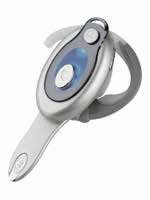 Motorola and Skype Technologies have announced their intention to jump into bed together on a saucy co-marketing collaboration that will provide greater connectivity options and access for Skype’s 25+ million registered worldwide users.
Motorola and Skype Technologies have announced their intention to jump into bed together on a saucy co-marketing collaboration that will provide greater connectivity options and access for Skype’s 25+ million registered worldwide users.
Both companies are hoping that this technological romp will explore exciting opportunities for both companies.
Motorola’s strength in advanced mobile technology, mobile devices and accessories, should prove to be the perfect love match for Skype’s rapidly-growing global user base and rich voice and messaging communication tools.
The first baby born out of this union, will be the co-marketing of freshly optimised Motorola ‘Skype Ready’ companion products, such as Bluetooth headsets, dongles, and speakerphones, as well as delivery of the Skype Internet Telephony on selected Motorola mobile devices.
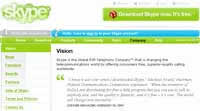 Liz Altman, vice president of business development, Motorola Mobile Devices, was clearly happy with the relationship:
Liz Altman, vice president of business development, Motorola Mobile Devices, was clearly happy with the relationship:
“By making Voice over IP truly mobile and easily accessible, we can make communications seamless for consumers as they travel throughout the environments of their day – at work, at home, in the car, or out in the world.
“With over 68 million downloads of their client in the last 18 months, we believe Skype is a natural fit with our vision of simple and seamless connectivity for our consumer customers around the globe.”
And Niklas Zennström, Skype CEO and co-founder was also enjoying the experience: “Our alliance with Motorola is a major step forward in delivering the Skype experience to a whole new base of mobile device and accessory users”
Motorola ‘Skype Ready’ companion products are expected to be available in the first half of 2005.
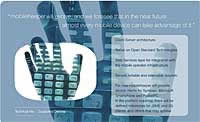 If you’ve ever had your phone stolen, left it in a cab or, like a colleague of ours, managed to send it spinning down the u-bend whilst attempting a tricky feat of toilet-based multi-tasking, you’ll know the pain of unexpectedly parting company with your phone.
If you’ve ever had your phone stolen, left it in a cab or, like a colleague of ours, managed to send it spinning down the u-bend whilst attempting a tricky feat of toilet-based multi-tasking, you’ll know the pain of unexpectedly parting company with your phone.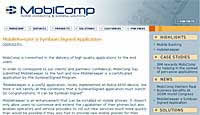 Working as extended storage for the mobile device, the application offers “over the air” data backup for the mobile device allows storage and recovery of contacts, calendar, tasks, SMS, MMS, ring tones, images, videos, J2ME applications and anything else you can fit on your phone.
Working as extended storage for the mobile device, the application offers “over the air” data backup for the mobile device allows storage and recovery of contacts, calendar, tasks, SMS, MMS, ring tones, images, videos, J2ME applications and anything else you can fit on your phone.
 The two companies worked for several months to integrate the software with the handsets and have provided a solution that will, in some circumstances, enable calls made over GSM and GPRS technology to be free, while others will be subject to small charges.
The two companies worked for several months to integrate the software with the handsets and have provided a solution that will, in some circumstances, enable calls made over GSM and GPRS technology to be free, while others will be subject to small charges. In a litigious pincer movement,
In a litigious pincer movement,  Despite surviving last year’s pre-Christmas BitTorrent blitz, the LokiTorrent site was finally closed down by a Dallas court yesterday.
Despite surviving last year’s pre-Christmas BitTorrent blitz, the LokiTorrent site was finally closed down by a Dallas court yesterday.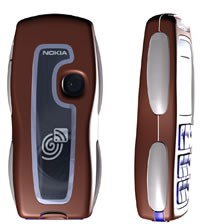 The world’s first Near Field Communications (NFC) product for payment and ticketing will be an enhanced version of the already announced Nokia NFC shell for Nokia 3220 phone.
The world’s first Near Field Communications (NFC) product for payment and ticketing will be an enhanced version of the already announced Nokia NFC shell for Nokia 3220 phone.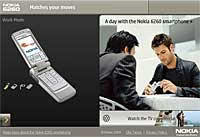 If you’ve ever wished that your answerphone message mumblings could have a bit more pizzazz, Nokia’s new
If you’ve ever wished that your answerphone message mumblings could have a bit more pizzazz, Nokia’s new  The Independent Office of the Telecoms Adjudicator (OTA) has issued an update on their progress of ‘local loop unbundling’ (LLU – the process of opening BT’s exchanges to competitors).
The Independent Office of the Telecoms Adjudicator (OTA) has issued an update on their progress of ‘local loop unbundling’ (LLU – the process of opening BT’s exchanges to competitors).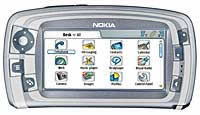 Nokia’s hotly awaited new multimedia smartphone, the
Nokia’s hotly awaited new multimedia smartphone, the  Depending on the sales package, some mobile media applications and services will be pre-installed on the 128 MB MMC, including Mobipocket Reader. This e-book reading application, already popular on Palm/Pocket PC platforms, gives the user access to thousands of titles including current bestsellers.
Depending on the sales package, some mobile media applications and services will be pre-installed on the 128 MB MMC, including Mobipocket Reader. This e-book reading application, already popular on Palm/Pocket PC platforms, gives the user access to thousands of titles including current bestsellers.